Heep Hong Society
Strategies on Professional Therapy
- Neurodevelopmental Treatment
- Conductive Education
- Motor Learning
- Behavioral Approach
- Sensory Integrative Therapy
- TEACCH
- SCERTS Model
- Social Story
- Play Therapy
- Floor Time
- RDI® Program
- Project Approach
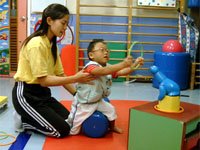
Neurodevelopmental Treatment
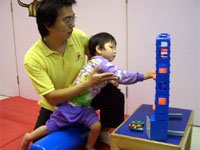
Neurodevelopmental Treatment
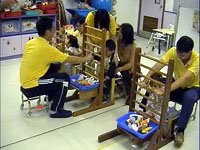
Conductive Education

Motor Learning
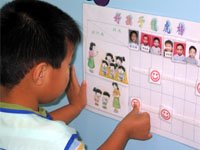
Behavioral Approach
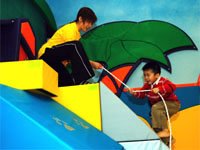
Sensory Integrative Therapy
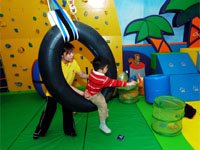
Sensory Integrative Therapy
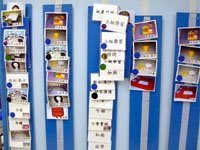
TEACCH
SCERTS Model
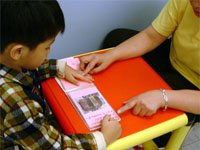
Social Story
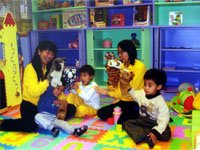
Play Therapy
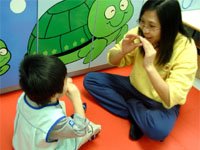
Floor Time
RDI® Program

Project Approach
Neurodevelopmental Treatment
The treatment is developed for children with cerebral palsy to inhabit their atypical posture and movement patterns, facilitate their movement, and improve their daily functional skills development with the assistance of a therapist’s specific handling techniques.
Conductive Education
This is a systematic educational and treatment approach to train children with motor disabilities, such as cerebral palsy. Motor patterns are devised through the systematic analysis of motion and rhythmic language, and incorporated into everyday life so as to develop children’s movement ability and their life skills.
Motor Learning
Motor learning is an approach for motor skill acquisition and modification, and has been applied in therapy and rehabilitation services. Therapists dismantle the movement and effectively improve the motor skills of children with proper “practices” and “feedback”. This approach could be widely applied to children with developmental coordination disorders.
Behavioral Approach
Behavioral approach has adopted the principles of “learning theories” in psychology. It serves to replace problematic behaviors with target behaviors through a reward-and-punishment mechanism established in accordance with children’s behaviors, strengths and interests. This approach has demonstrated its effectiveness in reinforcing children’s learning motivation and improving their attentiveness, behavioral and emotional problems.
Sensory Integrative Therapy
Sensory integration therapy helps children modulate different senses including tactile, proprioceptive, vestibular, visual and auditory senses, to elicit adaptive responses. Improvements in postural control, body co-ordination, motor planning, organization, attention, social skills and functional performance in play, self-care and learning of the children can be achieved.
TEACCH
By structuring the physical environment and learning activities, and ample provision of visual cues, TEACCH facilitates children’s understanding of messages and commands, adaptation to changes in environment and emotional stability. The individualized person-centered plan of TEACCH helps to motivate and enable children to work more independently. This approach is more suitable for children with autistic spectrum disorders.
SCERTS Model
The SCERTS (Social Communication, Emotional Regulation, Transactional Support) Model addresses the characteristics of children with Autism Spectrum Disorder (ASD) and related disabilities. By providing children with interpersonal and learning supports, the model helps children improve their social communication and emotional regulation competences. Through environmental adaptations and educational modification, children are able to maintain optimal arousal levels and well-regulated emotional states, which in turn, support them in developing spontaneous social communication and secure relationships with adults and their peers. As a result, children can cope with the academic and social demands, acquire and apply knowledge in their daily life.
Social Story
Describing events from the perspective of children, social stories provide comfort, guidance, support and credits to children for proper behaviors. This approach works through the composition of individual social stories according to the needs and characteristics of children. Through reading repeatedly, social stories teach children target behaviors, such as simple social manners and taking care of oneself. This approach is more suitable for children with autistic spectrum disorders.
Play Therapy
Young children generally lack of experience and language skills to express their mind. In view of this, play therapy makes use of play, their favorite, to earn their trust and acceptance, and thereby allowing them to explore and exhibit their feelings, thoughts and behaviors in a safe environment, and acquire problem-solving skills. Play therapy is a treatment for children with emotional or behavioral problems.
Floor Time
Emotions help children control their behaviors, organize their experience, acquire new experience, solve problems and think. Based on the development of emotions and individual difference, Floor Time, a relationship-based training model, provides a good time for parents and children to share and encourages parents to follow children’s interests. By engaging in activities favored by children, parents help children to develop their self-consciousness and potentials. Floor Time is more suitable for children with autistic spectrum disorders.
RDI® Program
Studies show that even some of the children with autism who have high language and intellectual capabilities still lack of Dynamic Intelligence to cope with the changing and dynamic world. RDI® Program is a parent-led intervention approach to enhance the Dynamic Intelligence of their autistic children so that their social interaction, thinking and problem-solving capabilities could be gradually strengthened.
Project Approach
Project Approach is borrowed from ordinary kindergartens. Under the guidance of child care teachers, children conducted research on topics related to daily life. The approach is highly flexible and led by children so as to enhance the problem-solving ability of children. Apart from enhancing children’s learning motivation and enabling them to conduct in-depth research on specific topics, this approach also prepares children for open-ended teaching style, and facilitates parent-teacher collaboration. Project Approach works on children with higher functioning and better comprehension.
